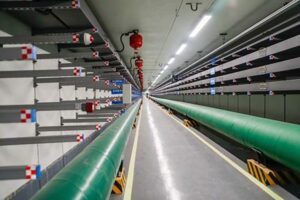高電圧ケーブルとは何ですか?
超高電圧伝送とは、の使用を指します 500 KV-1000 kV電圧レベルを送信して電気を送信します.
の場合 220 KV送信指数はです 100%, UHVトランスミッションの1キロメートルあたりの相対的な投資, 100キロメートルのキロワット時の電力伝達と金属材料の消費量あたりの相対コスト, 等, 大幅に減少しています, そして、ラインコリドの利用率は大幅に改善されました.
私たちの日常生活で, オーバーヘッド超高電圧伝送プロジェクトをよく見ることができます, 質問について考えたかどうか: なぜ都市の地下ケーブルのようになれないのか, 高電圧電力線はすべて地下に埋もれています?






